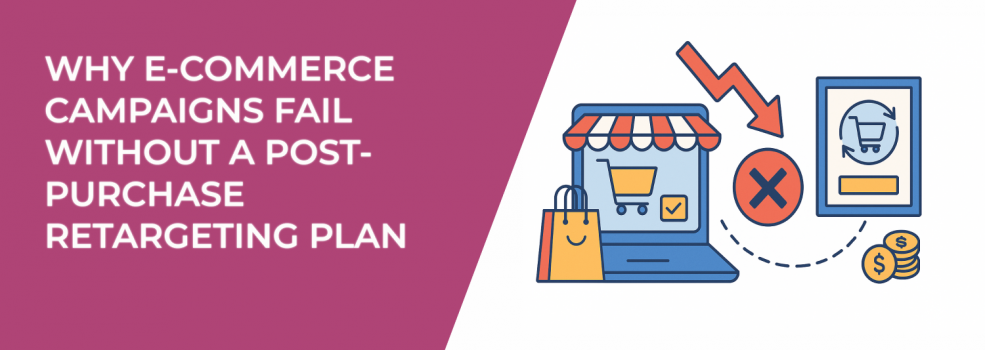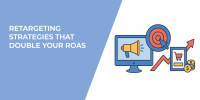Running ads that convert is tough. But keeping customers around after that first sale? Even tougher.
A lot of e-commerce brands spend their entire ad budget on getting someone to buy once. Then they move on. No follow-up. No retargeting. No long game.
Here’s the thing: the real value of a customer often starts after they buy.
Why Post-Purchase Retargeting Is Essential
When someone buys from your store, they’re already showing trust. That makes them one of your warmest audiences. And yet, many brands focus more on chasing new customers than nurturing the ones they already have.
That’s risky.
Customers are busy. They forget brands quickly. If you’re not following up, someone else will be.
What Happens When You Don’t Have a Plan
Without a post-purchase strategy, you're missing out on:
-
Repeat purchases, which usually cost far less to generate than first-time conversions.
-
Bigger average order values, especially if you don’t offer upsells or bundles.
-
Customer loyalty, because no one sticks around when they feel ignored.
Worse, your campaigns might start underperforming and you won't know why.
The Fix: Build a Post-Purchase Retargeting Flow
A good retargeting strategy starts simple:
-
Send a thank-you message to show appreciation and start the next interaction. This opens the door for deeper customer relationships and higher lifetime value.
-
Follow up with helpful content like usage tips, FAQs, or how-to videos. This reduces buyer's remorse and builds confidence in your brand.
-
Introduce relevant offers a few days or weeks after the sale. Think cross-sells or product bundles that make sense.
-
Invite them back for loyalty points, VIP sales, or early access. These small perks make people feel valued.
Each step builds trust. Each one gives the customer a reason to come back.
If you're building around product categories and SKUs, you might want to look at this guide on segmenting Facebook audiences by product category in your e-commerce store.
You should also consider how Facebook Ads for e-commerce promotions and discounts can play into your post-purchase strategy. Timely, relevant offers work well when they hit shortly after a purchase.
Segment Smarter
Not every buyer is the same. Some people buy once and vanish. Others turn into repeat customers quickly.
Segmenting your audience helps you speak directly to where they are. Here’s a useful step-by-step guide to defining target audiences.
You can segment by:
-
First-time vs repeat buyers,
-
High spenders vs single-item shoppers,
-
Product category or type of offer claimed.
Then match your ads to their behavior, interests, and shopping patterns. This is where smart retargeting begins.
Make Your Ads Fit the Moment
Retargeting isn't about blasting more of the same ad to everyone. It’s about timing, messaging, and intent.
Choose the right campaign objective to get the best results. If you're not sure which to use, this breakdown of Meta ad objectives can help you align your goals with your ad setup.
Also, tailor your creative. Repeating the same images or headlines won’t work forever.
If your store uses a lot of product inventory, consider combining dynamic ads with retargeting to show customers personalized suggestions based on what they previously viewed or added to cart.
Keep Testing and Improving
Don’t assume a strategy that worked in Q1 will still hold up in Q4. Track results. Run A/B tests. Update your copy and creatives often.
And if you're marketing during key retail windows, don't miss this guide to maximizing your Facebook ads for e-commerce during peak seasons.
You might also want to explore how to drive e-commerce success using Meta Advantage+, especially if you're scaling campaigns across multiple product lines.
Final Thought
Winning e-commerce brands don’t just sell. They reconnect. They retarget with purpose.
So if your current strategy ends at the sale, you’re not just leaving money on the table. You’re ignoring the best part of the customer journey.

